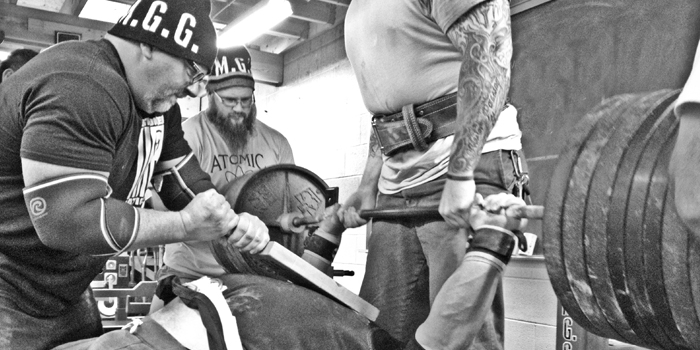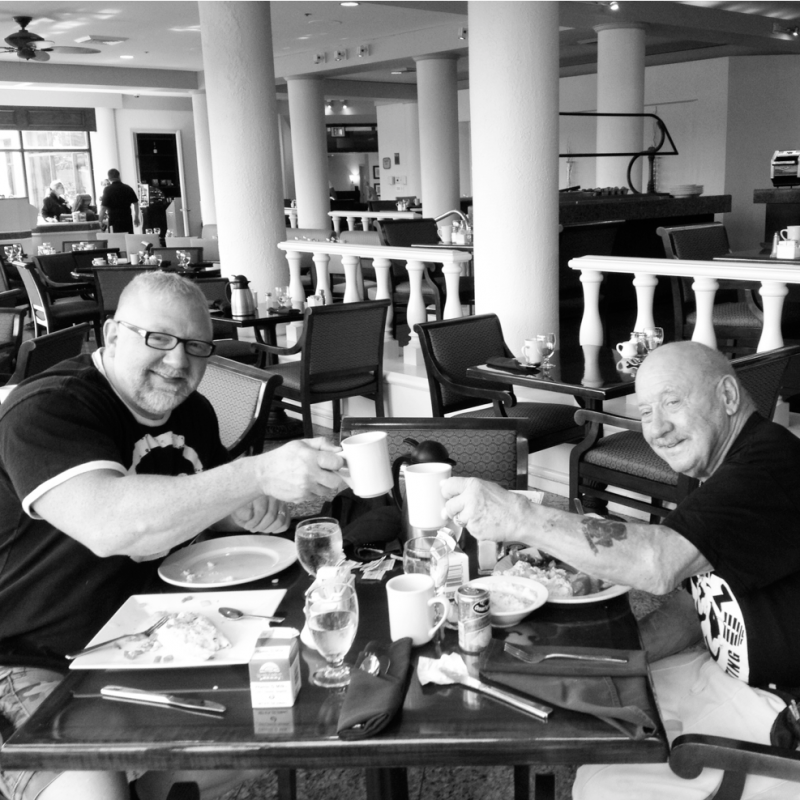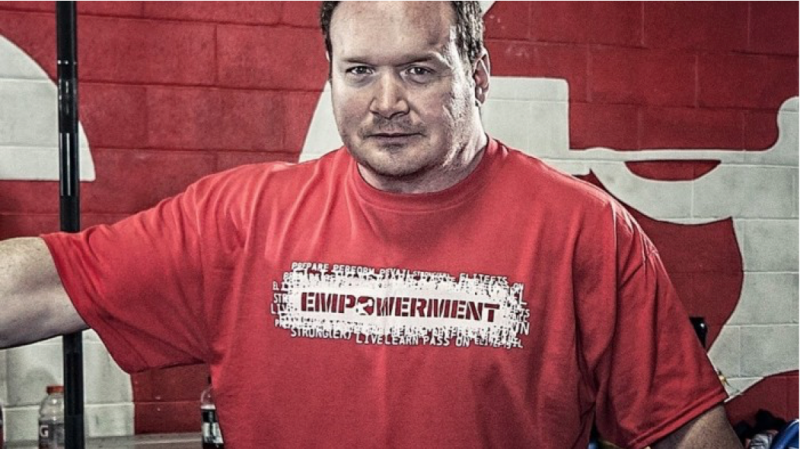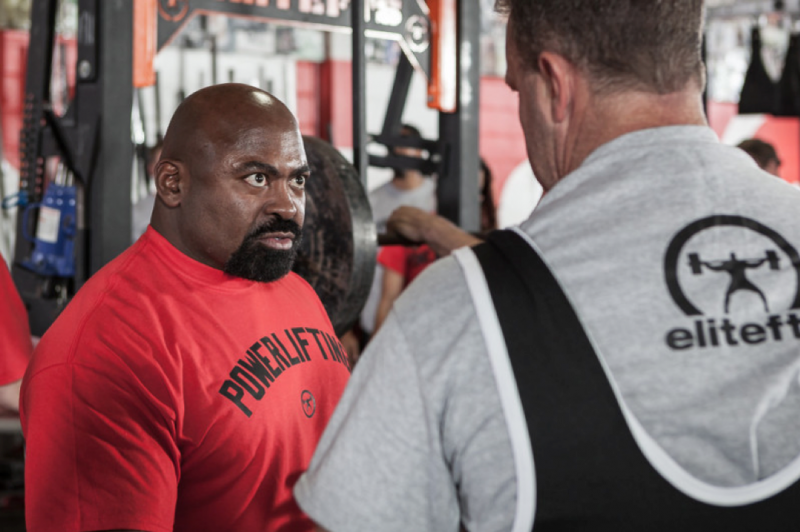
“Every one of us is, in the cosmic perspective, precious. If a human disagrees with you, let him live. In a hundred billion galaxies, you will never find another.” Carl Sagan
As a little 13-year-old kid in 1980, I remember watching Carl Sagan’s "Cosmos: A Personal Voyage" television series. That 1980’s series was the original series that astrophysicist Neil deGrasse Tyson was inspired by and consequently developed the "2014 Cosmos: A Spacetime Odyssey" television series which has been watched by over 400 million people.
This original 1980 series was a thirteen-part television series that was created and written by astronomer, cosmologist, astrophysicist and astrobiologist, Carl Sagan. At that time, this series was the most watched series in the history of American public television. The popularity in part was due to the fact that it was about how all humanity, as minuscule as we all are in the big picture, are all a part of the massive universe, as well as the fact that we are all made of the same materials (star stuff, he would become famous for calling it) as the massive universe. It was about how, in spite of our differences, we are all made of the same essence.
Throughout the series, Carl Sagan would take the viewer through the vast cosmos and during these voyages he would explain (in far simpler than astrophysics terms) the concepts and theories of space, the planets, our solar system, galaxy, universe, the laws of physics and time and theories of the enormous as well as the sub-atomic. Throughout the series there was, to me anyway, a theme that kept coming up, and that was time — time not limited to the time of day, but the concept of time and the reality of the brevity of time with regard to our perspective and lives as human beings.
When we look at the life span of a fruit fly, about 40 days (a really, really old fruit fly lives to be 50 days or about 1200 hours), it seems like such a short amount of time. Perhaps so short that some would say, “What is the point?” Compared to yours or your neighbor’s cat, the fruit fly’s 50 days alive on the planet sure pales in comparison to the cat that lives a whopping 12-18 years. That amount of time seems more like the human perspective of years. No, when we look at the average human life span...well, everyone wants to live to be a centenarian. The reality is, the average life expectancy is 71 years. How old are you right now? Let that sink in for a moment, then we will continue.
In either of these cases, 40 days, 12-18 years, or 100 years, this is a blink of an eye when you compare it to the fact that the universe is 13.8 billion years. A billion is almost too mind-blowing to even conceptualize. In more understandable terms as created by an ad company in hopes of us understanding the concept of one billion, one billion seconds ago it was 1959. One billion minutes ago, Jesus was alive, and one billion hours ago humanity was in the Stone Age.
So, our life span is pretty weak in perspective to the age of our universe, our galaxy, solar system, or the earth (4.5 billion years). So like us to the 40-day fruit fly where we might say, “What is the point?” the universal views toward a human life might also be “What is the point?” But from our human perspective, we not only find 100 years to be a long time, we, each and every day, waste time like we have a billion years ahead of us. It is human nature for so many to squander away this precious life we have.
RECENT: What Data Collection Could Mean for Your 2017 Powerlifting Total
Carl Sagan was once asked, if he could have humanity understand just one concept, what it would be. His answer was for us to be able to understand the concept of time and how precious time is. In my own personal view, the value of this concept would be for people to have the ability to understand that each of us sees life through our own lens of perspective during our years on this planet, and our years and perspective are based upon our own experiences that we have lived through, as those are unique to each person. With that as context, with age does come the ability to see a repeat of history. If you are a 20-something, you see so much thrust and parry about this past presidential election. This tumultuous transition pales in comparison to living through Watergate and the impeachment of President Richard Nixon, and that presidential catastrophe of the Nixon administration pales in comparison to the assignation of President John F. Kennedy. The 80-year-old has a different perception of today’s political landscape as their time on earth has allowed for them to have a deeper pool of perspective. A person who lived through JFK’s assignation, as well as this latest election, would have perspective and could see through that lens of perspective that the issues today, although combative, are nothing compared to the time they sat transfixed listening to the news as they heard live updates about their president being assassinated.
Those who have been around the block a few times can look back and see things a little clearer via perspective, and also through that perspective they can make better assessments of the given situation. Perspective also allows them to see the mistakes others are headed toward, as they have either seen the mistakes before or have made those or similar mistakes themselves. In either case, the person afforded perspective through life’s experiences is in the unique situation to help out those lacking that same perspective. Likewise, perspective allows one to look back at the positive decisions they or others have made and to that end, be able to see and guide those who are on the right path. These are the gifts of perspective granted by age and through experiences. Huge perspectives like the presidential examples earlier are big examples that come with age, but there are little—but not less important—perspectives that also come with age.
For our purpose as powerlifters, there is perspective as well: the perspective that comes from folks in the power game for 30 years versus the perspective of the person in the power game for six months. This is the perspective that, for our purposes here, is worth exploring.
It is used so often it sounds cliché, but the saying rings of truth and is still often not heeded. The actual quote reads this way:
“Those who do not learn from the past are doomed to repeat it.”
George Santayana, an Italian philosopher is famed to have made this statement back in the early 1900’s. With regard to powerlifting the same is ultimately true as well.
As a lifter who stood on the platform in my very first meet back in 1989, I have been witness to aspects of powerlifting history repeat itself time and time again. I have seen the same personality types come and go, just with different names and within different decades. I've watched the pendulum of an array of issues swing fully one direction, only to see it swing over time in the exact opposite direction. The swinging pendulum from raw to geared, to multi-ply back to a sport that is now 90% raw is an example of this. These repeated events do and will continue to repeat themselves, and those with a little more perspective, in my view anyway, have somewhat of a responsibility to share their perspectives with the younger powerlifter who has yet to be around long enough to have any real perspective of the sport. It is—again, in my opinion—an obligation to help the younger/less experienced lifters avoid the landmines you have seen other lifters step on over the years, as well as the ones you might have stepped on yourself. Having said that, sharing your perspective and knowledge versus someone following the bread crumbs afforded by that perspective — well, my friends, those are two mutually exclusive things.
Photo: Eric Maroscher, MONSTER GARAGE GYM with Powerlifting Legend, and Coach Ernie Frantz
All this said, I have seen patterns emerge over the years. So during this year, as this is the year I turned 50 (still seems surreal), in light of that milestone, I want to share with you some of my perspective. This is merely my perspective and by no means is it the holy book of perspectives, but my perspective is from looking back over some 50 years of life experiences with over half of those years in this sport of powerlifting we all love so much. I am sharing some perspectives with you today, as I remember like yesterday. These are the perspectives of Ernie Frantz, the Godfather of powerlifting, shared with me back in the early 1990’s. His perspectives impacted my life and I am a better lifter for them, but I am also a better person for knowing him. I am no Ernie Frantz—not even close, not even remotely close, as no one is Ernie Frantz but Ernie Frantz—but hopefully a few things I have seen through time and with the lens of perspective can help to illuminate a path in some small way.
As with most things in life, a good chunk of folks will read this, but only a few will heed this information because, to use another ultra-cliché idiom, “You can lead a horse to water, but you can’t make it drink.” So, I share with you some perspective for you to ponder, consider, actually utilize, or completely disregard. That decision is up to you, 100%.
In this, part one, of this several part perspective series, here are the first five perspectives for you to consider as you make your initial steps into the journey that we call powerlifting.
1. There are no secrets.
Hey, shh, come here kid. Let me tell you the secret to powerlifting; it’s this program, this technique, this supplement, this equipment, this drug, this routine, this book, this exercise, this piece of equipment, this latest and greatest widget, this ancient thing that was just rediscovered, and this brand new thing that nobody knows about yet.
The real secret to powerlifting success is that there is no one secret. This fact, ironically, is the best-kept secret. The reality is, there is nothing sexy or top secret about hard work, consistency, proper technique, sufficient rest, and quality food/nutrition. But the reality is, these five things are drab, boring, and plain old hard to maintain day in and day out, session after session, month after month, year after year, decade after decade. The reality is, those five things are the only things that have ever worked to turn an average powerlifter into a good powerlifter, a good powerlifter into a great powerlifter, and a great powerlifter into a superior powerlifter.
If you are looking for a secret or a short cut, stop wasting time and start putting in time. Anyone that tells you “they have the secret to powerlifting,” they are selling something and you surely don’t want to buy it. Chasing secrets will only bring in more changing variables and less time putting your nose to the grindstone. The moment you become a deer in the headlights of the super-secret-training-template is the moment you veer away from the reality that is hard work and consistency. Thus you begin heading directly toward the false world where a secret program, secret supplement, or a secret exercise alone makes a champion. Let me put this in social media terms for you so you can really get this concept.
#HARDWORKCONSISTENCYPROPERTECHNIQUESUFFICIENTRESTPROPERNUTRITION #THEREARENOPOWERLIFTINGSECRETS #IFITWEREJUSTONETHINGTHATMADEACHAMPIONEVERYONEWOULDBEACHAMPION
Photo: GOAT Ed Coan, elitefts Advisor
2. Sometimes the loudest guy at your gym is only that: the loudest guy.
I consider myself amazingly fortunate to have trained with some of the best powerlifters over these past two-and-a-half decades, and in some cases, trained alongside of some of the best lifters who ever walked the planet. During my life in gyms there is always “that guy.” “That guy” is the same guy over and over, year after year, and decade after decade in gym after gym after gym. This guy will be known by a different name, he will physically be a different person, but he can be found all over the world in different places at the same time. That guy is the loud guy that expounds on how only he knows everything there is to know and his way is “the” only way, and if someone doesn’t ascribe to his ways for doing things, they are doing it all wrong.
Every serious gym I have lifted at starting in the early 1980’s has had this same guy. You know him too, because he is also at your gym. If you are new to the game, rule of thumb is this: if someone has to be loud all the time, it is most likely because they have nothing of worth to say and volume, bravado, and all caps on social media are the only tools they have to be heard.
Look around your gym if you are newer and find the guy or gal who successfully walks the powerlifting talk and thus doesn’t need to shout to be heard. Find someone who has been there, done that over and over again, and who also has the ability to properly explain it. I never heard powerlifting legend Ernie Frantz ever raise his voice, nor have I ever heard a story about Ed Coan putting someone down for not following his specific deadlift routine. Some of the most helpful and knowledgeable lifters are ones you have to go up to and ask for help, as they would never want to presume that you want their help nor would they impose their views without being asked, because they don’t have an ego in the game. The truly knowledgeable people in the sport help for the sake of helping, not for the sake of direction, dictating, or demanding. Seek that successful lifter who doesn’t have to yell to be heard, as that is the lifter that has something to say, and that is the lifter who is worth listening to.
3. "All you can eat" is a fallacy.
In my list of things I see over and over again that lead the lifter away from success, high on the list is eating big to be big. I say this because being only big merely puts you into a weight class, where as being strong wins the meet — and isn’t that really the ultimate goal here? Numbers on a scale are never as important as the numbers in your total. The reality is that sufficient calories are a crucial factor, but the type of calories are even more important because you are working on being as strong as you can as a 15-20% body fat 181-pounder. And as a 15-20% body fat 181-pounder, you will, 99 out of 100 times, beat the 30-50% body fat 181-pounder. You can only get so much leverage out of your fat content, and after that it only works against you. I have written about magnesium and its crucial role in ATP and mitochondria output and replication. All you can eat versus eating what is going to help you become a strong(er) athlete are two mutually exclusive things.
The trap—and through my perspective of decades in the game I have seen this countless times—is that newer lifters start training and also eating more and see the strength levels go up, so they continue to eat more for the sake of eating more. The reality is, if you are a newer lifter, your lifts have no other choice than to go up. Going from a man or woman who has never trained to a man or woman training hard, the weights you put up will, 100% guaranteed, show that you are getting strong(er). Attributing those initial strength gains to a 10,000-calorie diet of Big Macs and mac and cheese is neglecting to look at the reality of the scientific method and the actual variables involved that made you strong(er).
Growing into a weight class because you have to, due to quality muscle mass, takes time. And bigger, especially when it comes to powerlifting, is not always better. Dan Green is plenty strong as is Chris Duffin, and sloppy they are not. This is food for thought (pun intended) as those with perspective see this cycle replay itself over and over and over again. Going back to number one, the “see” food diet never worked as efficiently as feeding your body like an athlete, and it never will. It is definitely not a secret to success in this sport. As with everything, there is a point of diminishing returns. Avoid this pitfall that perspective lets other see so clearly, because there is so much more to a bigger total than empty calories.
4. There is only one best way.
To be clear, there is no ONE, best way. There is only the best way for YOU. And what is right for you as a newbie lifter may not be right for you after four years of powerlifting. That might change again after ten years under the bar. Golf legend Tiger Woods has changed his famous swing no less than three times. This is a big deal for someone at the top of their game. So for a powerlifter to think that their routine, program, technique, or style won’t change as they grow and become more powerful is shortsighted at best. What is best for one lifter may not be best for another lifter. What is best for a deadlifting machine like Steve Goggins might not be the best for you, as you are not Steve Goggins, you are not built like Steve Goggins, and you might not train like Steve Goggins. And who knows, you might just end up a great puller like Steve, but through doing your thing, the way that is best for you. Figure out what is best for YOU, as it might not be what is best for someone else.
Photo: Steve Goggins (amazing deadlifter and first person to squat 1102 pounds, which he did at 242 pounds), of elitefts and Goggins Force
5. Great lifters are not always great teachers.
In addition to powerlifting and owning a powerlifting gym, I have been in education for 26 years now. And as an assistant principal in my “real life,” I have seen over and again that “knowing” and “teaching” are two vastly different things. I have seen kids graduate with 36's on their ACT and a state mathematics championship under their belt only to find, as an aspiring young teacher years later, that being a gifted mathematics genius does not necessarily equate to being able to teach math.
This is the same for powerlifting. Lots of great lifters out there, but being a great lifter versus a lifter who is able to convey the information in a way that another lifter can learn and from and then apply are worlds apart. Said another way, having the super star gold medal winner Usain Bolt yelling in your ear to “run faster,” won’t do half as much for the runner as a top 10 collegiate sprint champion who can properly explain to their athlete how to be more explosive out of the blocks, how to shorten the race with your stride, and how to best lean at the tape.
Teaching/coaching should come from someone who has been there, done that, and has so for an extended length of time (remember, big numbers are important, but big numbers sustained over time is the goal). But it should also be someone who can teach you in a way so you can go there and do that. In gyms all over the world we here cues such as "pull the slack out of the bar" or "head up, chest up." But if the lifter that is being worked with does not understand the meaning behind the verbal cue and how to implement it, that really just defeats the purpose and you are left with merely words being yelled towards a confused lifter.
Why so much emphasis on perspective and the newer lifter? The average competitive powerlifter does one to two meets, then they are done, finished, over and out. There could be hundreds of reasons why this is the case, but if there is a way to help these folks, through perspective, to avoid the pitfalls that could take them from the sport, it only behooves us who have been around long enough, and who have gained some perspective into this sport to do so. Not every lifter will become an Ed Coan, and not every lifter will be able to reach and teach as many others as a Dave Tate, but every lifter can be the best version of themselves.
Stay tuned for future additions to this perspective series list.
Wishing you the best in your lifting, training, competing, and learning as you continue through this journey called powerlifting. Ever onward.














2 Comments